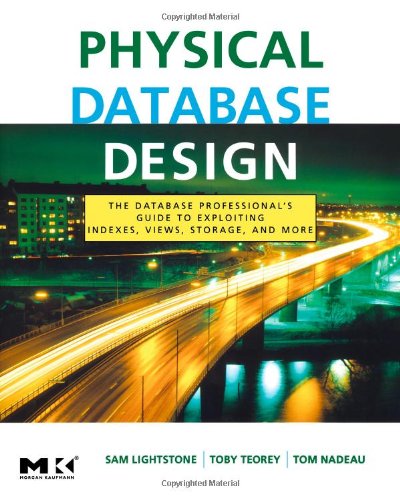Sam S. Lightstone, Toby J. Teorey, Tom Nadeau9780123693891, 0123693896
The rapidly increasing volume of information contained in relational databases places a strain on databases, performance, and maintainability, and DBAs are under greater pressure than ever to optimize database structure for system performance and administration.Physical Database Design discusses the concept of how physical structures of databases affect performance and includes specific examples, guidelines, and best and worst practices for a variety of DBMSs and configurations. Something as simple as improving the table index design has a profound impact on performance. Every form of relational database, such as Online Transaction Processing (OLTP), Enterprise Resource Management (ERP), Data Mining (DM), or Management Resource Planning (MRP), can be improved using these methods.About the Authors:Sam Lightstone is a Senior Technical Staff Member and Development Manager with IBM’s DB2 product development team. He is cofounder and leader of DB2’s autonomic computing R&D effort. He is Chair of the IEEE Data Engineering Workgroup on Self Managing Database Systems and a member of the IEEE Computer Society Task Force on Autonomous and Autonomic Computing. He is an IBM Master Inventor with over 25 patents and patents pending; he has published widely on autonomic computing for relational database systems.Toby Teorey is a professor emeritus in the Electrical Engineering and Computer Science Department and Director of Academic Programs in the College of Engineering at the University of Michigan, Ann Arbor. He has been active as program chair and program committee member for a variety of database conferences.Tom Nadeau is the founder of Aladdin Software(aladdinsoftware.com) and works in the area of data and text mining. He received M.S. and Ph.D. degrees in electrical engineering and computer science from the University of Michigan, Ann Arbor. His technical interests include data warehousing, OLAP, data mining, and machine learning. He won the best paper award at the 2001 IBM CASCON Conference.* The first complete treatment on physical database design, written by the authors of the seminal, Database Modeling and Design: Logical Design, 4th edition.* Includes an introduction to the major concepts of physical database design as well as detailed examples, using methodologies and tools most popular for relational databases today: Oracle, DB2 (IBM), and SQL Server (Microsoft).* Focuses on physical database design for exploiting B+tree indexing, clustered indexes, multidimensional clustering (MDC), range partitioning, shared nothing partitioning, shared disk data placement, materialized views, bitmap indexes, automated design tools, and more!” | |







Reviews
There are no reviews yet.